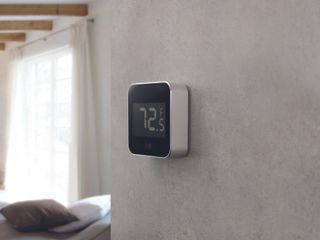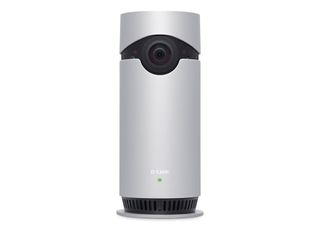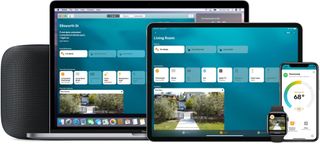How to set up a home automation system without running any wires

Wiring up smart switches, motion detectors, and cameras can be fun (it is for me, anyway), but you can get an excellent smart home system up and running without snaking cables throughout your home and fiddling with electrical wiring. In fact, if you skip the smart receptacles and in-wall switches, most smart home tech communicates wirelessly. That's good news for the perfectionist, the minimalist, and the renter with the strict landlord! Keep the worries, blemishes and complaints at bay by setting up a home automation system without running any wires!
Start with lighting

If you don't want to run cords or do any electrical wiring, smart bulbs are going to help you get the job done. Go around your house and look for lamps and fixtures. Check the bulbs to make sure the bases are compatible and swap 'em out for smart bulbs. You'll be able to position table and floor lamps anywhere you want (provided there's a plug nearby) and you'll be able to control them using apps and — in most cases — your voice.
Best Low-Cost Lights for Your Smart Home
Keep in mind if you choose to use Philips Hue bulbs or a wireless bulb that uses ZigBee or Z-Wave to communicate, you're going to need to connect a Philips Hue, ZigBee, or Z-Wave bridge to your router in order to control your lighting. If you'd rather skip the bridge, look for bulbs that communicate using either Bluetooth or Wi-Fi.
Look for Wi-Fi and Bluetooth LE

When you're shopping for home automation accessories, look for products that mention Wi-Fi and Bluetooth LE. Many motion sensors, contact sensors, air quality sensors, and temperature sensors used for home automation rely on Bluetooth LE for communication. The wireless protocol is very energy efficient so these sensors can run on batteries for long periods of time. You can pop in some batteries and fasten a sensor to a wall or place it on a shelf — no wires required!
Elgato's Eve line of smart home products uses Bluetooth LE. I have several of the company's motion, contact, and environment sensors in my home and have had them running for many months without needing to replace batteries (or run wires!).
The iDevices Switch is a Wi-Fi smart plug that's among the most reliable, most aesthetically pleasing smart plugs on the market. Many smart plugs rely on Wi-Fi for communication, making them a reliable choice for automations of any kind.
Master your iPhone in minutes
iMore offers spot-on advice and guidance from our team of experts, with decades of Apple device experience to lean on. Learn more with iMore!
Accept the cord or skip the camera

If you want to add a camera to your smart home setup, you're going to have to be OK with cords. Sure, some cameras offer wireless capabilities but they almost always require a hub or base station of some sort that stores the footage it's recording.
Whether you're installing a Nest cam up on the wall somewhere in our outside your home, or you're placing a D-Link Omna 180 Cam on a shelf, the camera needs power to keep itself running and recording. If it's more important for you to have a camera in or outside your home than it is to be wire-free, here's what you need to do: Put on a brave face and just be OK with the power cord. I hated seeing the cord dangling from my Nest cam (I have installed near the top of the frame between my living and dining room areas) so I installed some cable tracks and painted them to match my walls. It was a compromise, but I'm glad I did it.
Avoid wall outlets and light switches

As cool as it is to take control of your existing light and fan switches, you'll need to skip out on devices like the Lutron Caséta Wireless Kit and Elgato Eve Light Switch. These devices require working with electrical wiring.
How to add your existing lights and fans to your HomeKit-enabled home
For what it's worth, it's not at all difficult to install in-wall switches our outlets. In my experience, the instructions are well-detailed and most kits include all the extra hardware you need for installation. That said, if you're even the slightest bit uncomfortable with the idea of digging around inside your walls and working with electrical wiring, it's best to skip these devices or hire a professional for installation. The same caveat applies if you have an older home — many of these switches require a neutral wire which isn't present in older homes with older electrical systems.
Thoughts?
Do you have a wire-free smart home? Do you have any tips or tricks for folks looking to set up one of their own?
Do you have any other questions about a wire-free smart home? Leave your tips, tricks, comments, and questions in the comments!
Mikah Sargent is Senior Editor at Mobile Nations. When he's not bothering his chihuahuas, Mikah spends entirely too much time and money on HomeKit products. You can follow him on Twitter at @mikahsargent if you're so inclined.
Most Popular




